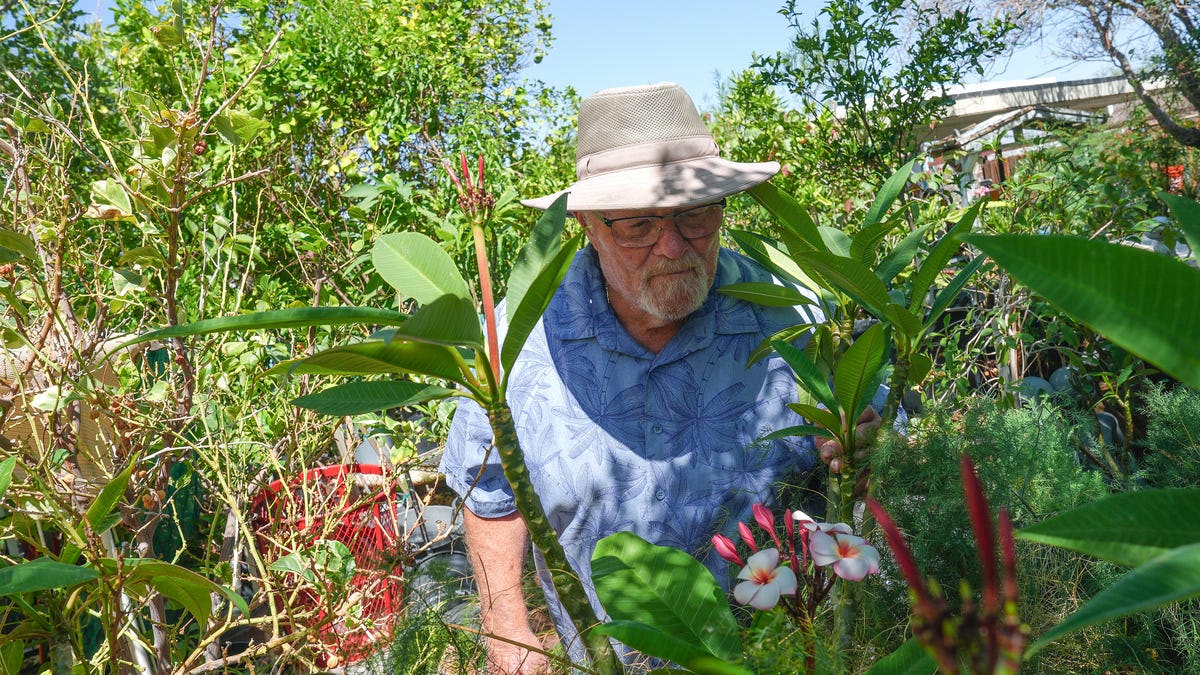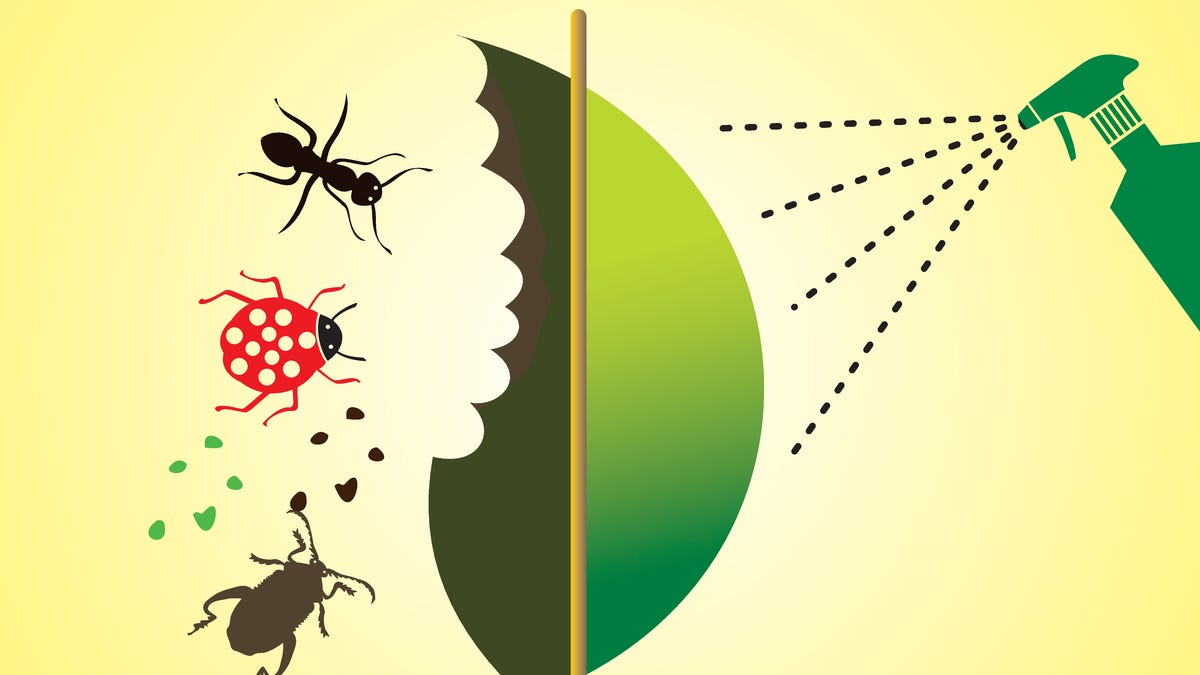Chaos gardening is a trend that sounds amazing on the surface. Just toss a mix of flower and vegetable seeds in your yard, and let nature work its magic. You’ll get a wild and free garden that is good for the planet and will require little to no work from you. No planning or overthinking required, right? Experts say it’s a little too good to be true for several reasons. Here’s what you should know before creating a chaos garden of your own.
Meet Our Expert
Warnings Against Chaos Gardening
While chaos gardening promises a beautiful and self-sustaining ecosystem, the reality falls short of the romantic vision. Laura Najman Janney, a garden designer and owner of The Inspired Garden in New Jersey, says chaos gardens can quickly become hard to manage. “They try to sell it as a lazy person’s garden, but I think it’s just going to be a big fat mess.”
Georgia Parkinson Hill, a horticulturist and garden designer who owns Beautyberry Gardens in Georgia says the promise of a maintenance-free garden is unrealistic. “That’s not happening here. There’s just no way.”
So carefully consider the following concerns from experts before randomly scattering any seeds in your garden.
Related: The 12 Best Places to Buy Seeds Online in 2025
1. Weeds Will Take Over
According to Hill, chaos gardening came from England, and she believes its popularity is driven by a desire to recreate the classic English cottage garden, a hodgepodge of flowers and edibles planted together in a naturalistic way. The problem is that weeds in England are nowhere near as tough as weeds on this side of the pond.
“The weeds in the UK are pretty friendly, not too problematic to deal with,” Hill says. “Pull them out, they don’t come back. They often don’t even mulch beds there, and the weeds don’t take over.” In the United States, weeds are much hardier. “We have so many weeds here that are invasive and difficult to get rid of, especially in the Southeast.”
If you follow the chaos garden plans that involve letting nature have its way, aggressive weeds can take over your garden, Janney agrees. “It’s not going to look like what you see on Instagram,” she warns.
Related: 37 Lawn and Garden Weeds: How to Identify and Control Them
2. Most Weeds Aren’t Native or Natural
Chaos gardening romanticizes weeds as a part of nature and claims that letting them live is a more evolved and eco-friendly way of gardening. The truth is many, if not most, of the weeds you battle in your yard and garden aren’t native or natural. They’re imports from around the world brought to America by colonists, and they survive because they are tough, resilient, and adaptable.
For example, the seed of a tumbleweed (native to Russia) can germinate and sprout in just a few hours. Kudzu (native to Asia) can grow a foot a day, and the roots of Japanese knotweed (also from Asia) can penetrate asphalt. Your flowers and vegetable plants don’t stand a chance against many of the weeds that will pop up in a chaos garden.
3. Growing from Direct-Sown Seed Is Difficult
A central tenet of chaos gardening is growing plants from seed to keep techniques simple. But growing plants from seeds sown directly into the ground isn’t always simple. “It can be really, really difficult to start plants from seed if you just throw them on the ground,” Hill says.
Germination rates can be low, especially if you’re using leftover seeds from previous years, as chaos gardeners recommend. “I’ve seen people try to start a garden from seed time and time again here in the Southeast, where they’ve got a nice seed mix, and they think this is going to be it,” Hill says. “Some of it takes, some of it doesn’t take. Sometimes none of it takes.”
Heavy rains, slopes, poor soil, and other environmental conditions make it difficult to start a garden from directly sown seeds. When the seeds sprout, it can be hard to tell the seedlings of plants you want from the seedlings of weeds you don’t want. “There’s weeds popping up and invasives popping up as well, and they can outcompete the seedlings you want,” Hill says.
Related: 5 Times Buying Seedlings Is Better Than Starting Seeds, According to an Expert
4. Stronger Plants Will Muscle Out Weaker Plants
In a free-for-all chaos garden, only the strongest plants will survive. While the surprise of what survives is pitched as part of the appeal, this also means you might not get the mix of plants you had originally hoped for. The bee balm might overrun the beans and tomatoes, and the sunflowers might shade out the cosmos, marigolds, and basil.
A garden overtaken by a couple of vigorous species reduces biodiversity and the mix of plants rather than increasing it. “It sounds wonderful, throwing annual seeds out in the yard, and they reseed themselves year after year while you do almost nothing,” Hill says. “But in practice, I don’t see this working. I see a mess of unhealthy plants and lots of weeds.”
5. Chaos Gardens Can Attract Pests and Diseases
A dense, unorganized garden can restrict airflow and trap humidity, creating perfect conditions for fungal diseases. Restricted airflow also attracts pests like slugs, snails, and aphids that thrive in a crowded garden that never dries out. When plants are crammed together, they compete for resources, which makes them stressed, weak, and more susceptible to pest infestations.
“Good garden design makes sure plants have enough space and are not overcrowded,” Janney says. “A planned garden tends to be a healthier garden.” A crowded, chaotic garden also makes it more difficult to spot the early signs of infestations of black spot or Japanese beetles, so you won’t know you have a problem until your plants have suffered heavy damage.
6. You’ll Get Lower Yields
The flowers and vegetables in chaos gardens might not get enough sunlight and nutrients to be their best. Plants competing for resources in a chaos garden will produce smaller and fewer blooms and vegetables than they would in a planned and maintained garden. “Vegetables in particular are always going to be quite weak compared to perennial seeds or invasive plants,” Hill says.
Natural-Looking Garden Tips
Try a different strategy to get a sustainable garden that’s biodiverse and natural-looking. Hill suggests using lots of ornamental grasses that will give your landscape soft shapes. She also recommends starting your garden with transplants in quart-sized pots because they are easier to establish.
“Choose perennials that self-seed,” Hill says. “That helps get a softer, natural look as they spread via seed.” She recommends ox eye sunflowers (Heliopsis helianthoides), columbine, common evening-primrose (Oenothera biennis,) coneflowers, black-eyed Susan (Rudbeckia hirta), and blue vervain (Verbena hastata) Choose a diverse mix of plants, she says, so you’ll get the biodiversity promised by chaos gardening.
Remember that weeding and planning are necessary steps for creating a successful garden. “I say anything beautiful requires work,” Janney says. “Nothing’s easy in life. It takes more than just throwing a bunch of seeds in your garden and hoping for the best.”
Read the original article on Better Homes & Gardens










